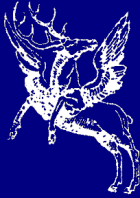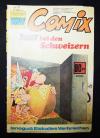Photojournalism
Die Liste enthält 6 Einträge. Suchergebnisse löschen und Gesamtbestand anzeigen.
| Abbildung |
Beschreibung Gesamte Buchaufnahme |
Preis EUR |
|
|---|---|---|---|
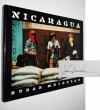 |
Meiselas, Susan. Nicaragua. June 1978 – July 1979. Edited with Claire Rosenberg. (Conversation with Kristen Lubben). Second Aperture edition. New York, Aperture (2016). Quer-Gr.-8° (22 x 27,5 cm.). [3] Bl., 71 Farbtafeln, [19] Bl. mit 1 Karte. Orig.-Leinenband mit farbig illustr. Schutzumschlag.
Auer 626. Parr/Badger II, 252. – Neuausgabe des wichtigsten Werks der Magnum Fotografin. – Von S. Meiselas signiert. – „Some of the most vicious wars of the 1970s were fought in Latin America, where Marxist or simply people’s revolts sought to overthrow military dictatorships and the bleeding of a country’s resources by small oligarchies. One such country was Nicaragua, where the generally hated regime of President Anastasio ‚Tachito‘ Somoza, after a long and bitter struggle, was defeated by the broadly left-wing but popular FSLN (Sandinista National Liberation Front). The Magnum photographer Susan Meiselas, by her own admission more or less stumbled into photographing the conflict by accident, but then stayed in Nicaragua on and off until Somoza was eventually ousted. From Meiselas’s involvement stemmed one of the best war photobooks since those produced during the conflict in Vietnam. Meiselas’s book is notable firstly because she shot it in colour, at a time when black and white was stil regarded as de rigueur for combat photography, although attitudes were changing around that time. Colour was regarded as too distracting and not gritty enough for photographing the harsh realities of war, despite thefact that blood is a bright, unrealred. But in Nicaragua, she proved that colour has virtues of its own, potentially adding irony and counteracting sentimentality. … Nevertheless, Nicaragua remains a powerful and exemplary chronicle of the kinds of conflict that proliferated in the late twentieth century“ (Martin Parr zur ersten Ausgabe, New York 1981). – Sehr gutes Exemplar. Schlagwörter: Documentary photography, Dokumentarfotografie, Nicaragua, Photojournalism, Photojournalismus, Signierte Bücher |
250,-- |  |
 |
Van Schaick – Lesy, Michael. Wisconsin death trip. With a preface by Warren Susman. (Photographs: Charles van Schaick). New York, Pantheon Books a Division of Random House (1973). Quer-4°. [131] Bl. mit 153 Abb. auf Tafeln. OLn. mit illustr. OU. (by Kenneth Miyamoto).
Auer 558. Roth, The Book of 101 Books 222 f. The Open Book 292 f. – Erste Ausgabe. – „Michael Lesy’s Wisconsin Death Trip is an eccentric, audacious, and frequently annoying book that its author calls “as much an exercise of history as it is an experiment of alchemy.“ Originally presented as Lesy’s Ph.D. thesis at Rutgers, the book is also as much a document of its time as it is a reflection on the past. In the early ’70s, when all received wisdom was subject to skeptical ’interrogation,“ Lesy’s imaginative and radical reevaluation of the historical record became a campus cult book much as Marshall McLuhan’s Understanding Media had nearly a decade before. Drawing primarily from an archive of 3,000 images (culled from 30,000 glass-plate negatives) made by town photographer Charles Van Schaick and from newspaper accounts first printed in the Badger State Banner, Lesy lays out an intricate patchwork of fact and fiction whose blighted nexus is the Wisconsin community of Black River Falls betwee n the Years 1890 and 1910. Lesy approaches the material like a novelist or a New Journalist, supplementing terse news from the Banner with observations by „two mythical creatures, a town historian and a local gossip, and excerpts from Main Street, Spoon River Anthology, and other relevant texts. … The photographs aren’t much more convincing, but they’ve got a certain morbid fascination. Van Schaick was not an undiscovered small-town visionary like Disfarmer, but he was considerably more versatile than the Arkansas studio photographer, and Lesy includes his pictures of school groups, rural scenes, still lifes, parties, commercial facades, and even a muscular male nude among the expected array of formal and informal portraits. But since the book is haunted by death, the photos of the living are bracketed and overshadowed by pictures of babies dead in their coffins, of extravagant memorial wreaths, and of mourning or maddened females. Lesy’s decision to collage and manipulate some of these images, often simply by doubling them as if in a mirror, is in keeping with his approach to the other historical raw material here, which is to say at once respectful and fanciful. Some would call it fast and loose“ (V. Aletti in Roth). – Sehr gutes sauberes Exemplar der gesuchten gebundenen Ausgabe. Schlagwörter: Photojournalism, Photojournalismus, Reportage-Photographie, USA |
280,-- |  |
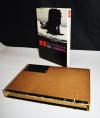 |
Kenmochi, Kazuo. Mayaku. Foto dkyumento. (Narcotics: Photographic Document). Tokyo, Inoue Shobo (1963). 4° (26,5 x 19,2 cm.). 157, (2) S. mit teils ganzs. Abb. Orig.-Pappband mit illustr. Schutzumschlag in Orig.-Versandkarton.
Heiting/Kaneko 370, 280. Parr/Badger III, 82. – Erste Ausgabe der ersten Fotodokumentation zum Drogenkonsum in Japan. – 1972 und 1973 erschienen aktuallisierte Neuausgaben. – „One of the most remarkable aspects of Kazuo Kenmochi’: Narcotic Photographic Document is the date of publication 1963. The book came out at a time when the world at large was only gradually becoming aware of the problems of narcotics, and the issue was not yet the headine news that it would become only a few short years later. At that time, drugs were still something wayward that people such as jazz musicians did – that is, drug-taking was seen by the mainstream as being confined largely to the ‚other‘. Kenmochi blasts through all this and identifies drug addiction as a serious and growing problem in a classic of investigative photojournalism. The book Iooks at every aspect of drugs, from their production their distribution, the mechanics of the business and the reaction of the law. His photographs are accompanied by a comprehensive text that contains statistical diagrams and objective sociological analysis. The text is the sober part of the work, somewhat at odds with the best of Kenmochi’s photographs, which are both expressive and intimate, with something of conspiratorial air of Larry Clark“ (Parr/Badger). – Schutzumschlag am Kapital etwas berieben und mit kl. Löchlein am hinteren Gelenk, Deckelschild des Versandkartons etwas berieben, sehr gutes Exemplar. – Dust jacket somewhat rubbed at the spine and with a small hole at the rear hinge, cover label of the dispatch box somewhat rubbed, a very good copy. Schlagwörter: Drogen, Drugs, Japan, Photojournalism, Reportage-Photographie |
400,-- |  |
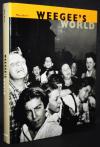 |
Weegee – Barth, Miles. Weegee’s world. [In conjunction with the exhibition „Weegee’s World: Life, Death, and the Human Drama“, organized by the International Center of Photography, New York, from November 21, 1997, through February 22, 1998]. Boston, New York, Toronto, London, Little, Brown and Company (1997). 4°. 262 S. mit 265 Duotone-Abb. OLn. mit illustr. OU. (A Bulfinch Press Book).
Weegee (d. i. Arthur H. Fellig, 1899-1968), „legendärer Sensationsfotograf der 30er Jahre. Chronist einer gewaltreichen Dekade. Zugleich Prototyp des gerissenen Bildjournalisten. Mittlerweile – im Sinne enes erweiterten Kunstbegriffs – Rezeption seines Oeuvres auch durch Galerien und Museen“ (H.-M. Koetzle). – „Sein Stil ist von einem krassen Realismus geprägt, kompositionelle Sorgfalt zählte dagegen weniger. Harte Kontraste bestimmen seine Bilder. Auch wenn dies in äußerlicher Hinsicht eine Folge des Umstandes ist, dass sie für die tägliche Massenpresse reproduzierbar sein mussten, spiegelt sich darin – vielleicht unbewusst – sein künstlerisches Naturell“ (K. Honnef in Koetzle). – Tadellos. Schlagwörter: Photojournalism, Reportage-Photographie |
45,-- |  |
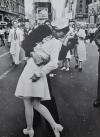 |
Eisenstaedt, Alfred. Witness to our time. Foreword by Henry R(obinson) Luce. New York, The Viking Press o. J. (1966). 4°. 343 S. mit zahlr. teils farb. Abb. OLn. mit farbig illustr. OU. (Jacket design by George Giusti). (A Studio book).
Kloetzle S. 127 f. – Erste Ausgabe der ersten Werkschau des berühmten amerk. Fotografen, der als einer der einflussreichsten Fotoreporter des 20. Jahrhunderts gilt. – „Als er 1935 in die USA emigrierte, gehörte er zu den ersten vier fest angestellten Fotografen für die gerade im Aufbau begriffene und ein Jahr später etablierte Zeitschrift „Life“. Für sie fotografierte er in den Folgejahren fast einhundert Titel und mehr als 2000 Reportagen. Die Großen der Welt aus Politik, Wirtschaft und Kultur zu porträtieren, lag ihm am besten. Dabei ließ er sich ganz auf deren Eigenheiten ein. So entstand in mehr als 50 Berufsjahren ein ‚Who is Who‘ ganz besonderer Art: eine Weltgeschichte in Porträts“ (E. Kaufhold in Koetzle). – Schutzumschlag mit kl. Randläsuren, gutes Exemplar. Schlagwörter: Fotografen, Photography, Photojournalism, Photojournalismus, Portrait photography, Portraits, Porträtfotografie |
90,-- |  |
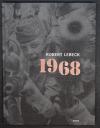 |
Lebeck – Beil, Ralf u. Alexander Kraus (Hrsg.). Robert Lebeck 1968. (Photo Reportages). Göttingen, Steidl 2018. 4°. 309 S. mit zahlr. teils farb. Abb. Illustr. OLn.
Verlagsfrisches Exemplar. Schlagwörter: Photojournalism, Photojournalismus |
30,-- |  |
|
Einträge 1–6 von 6
Zurück · Vor
|
|||
| Seite: 1 |

